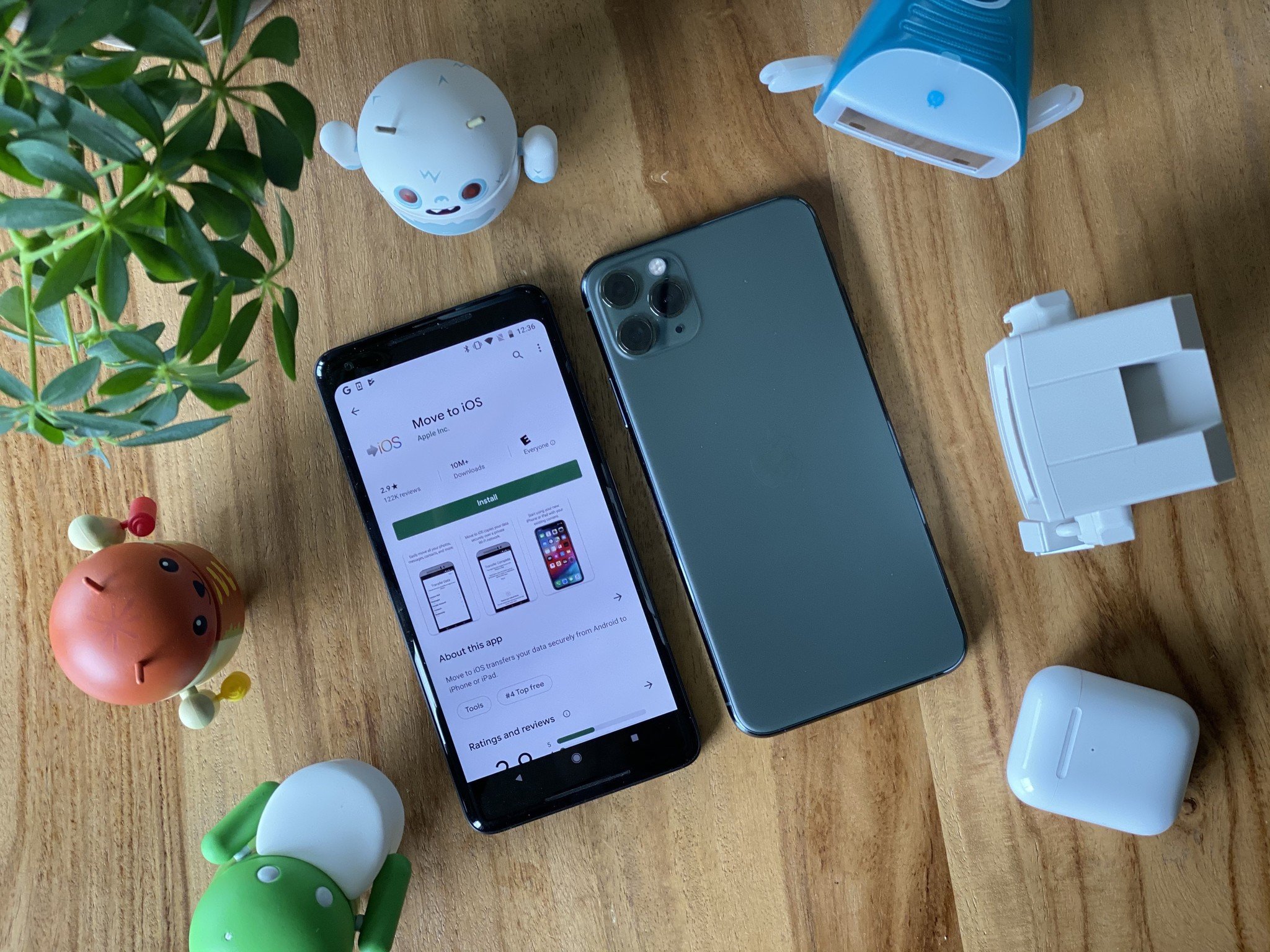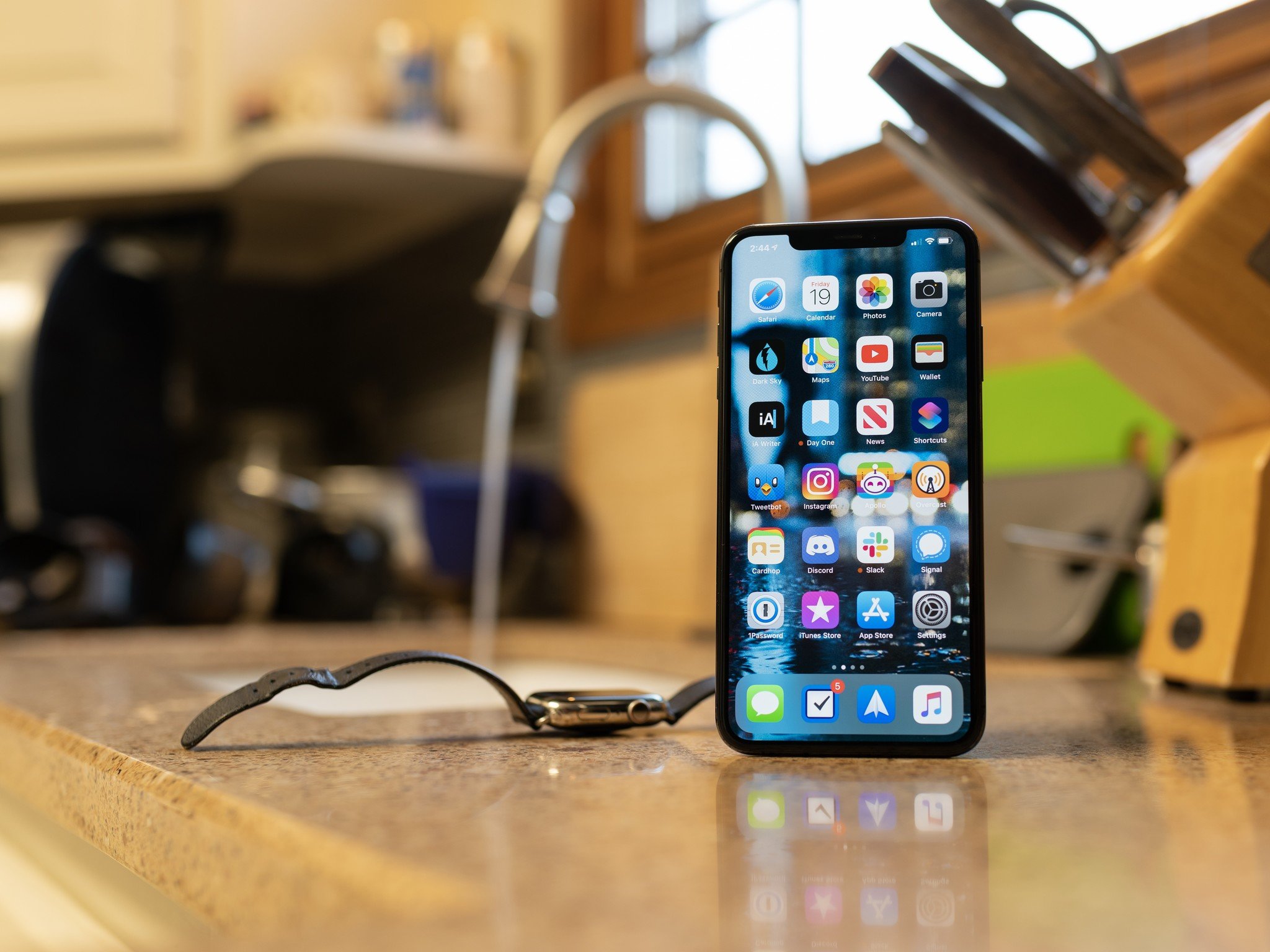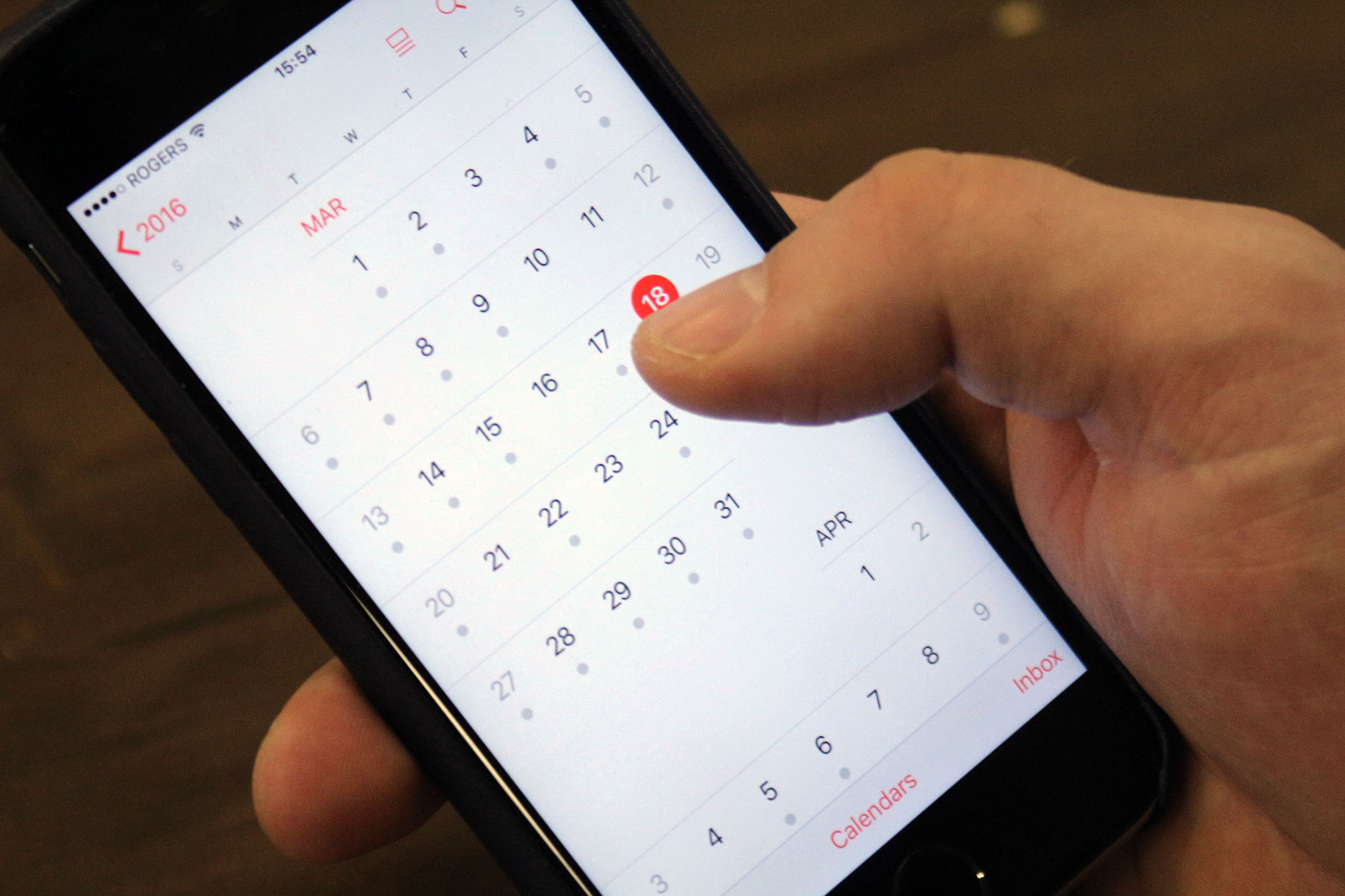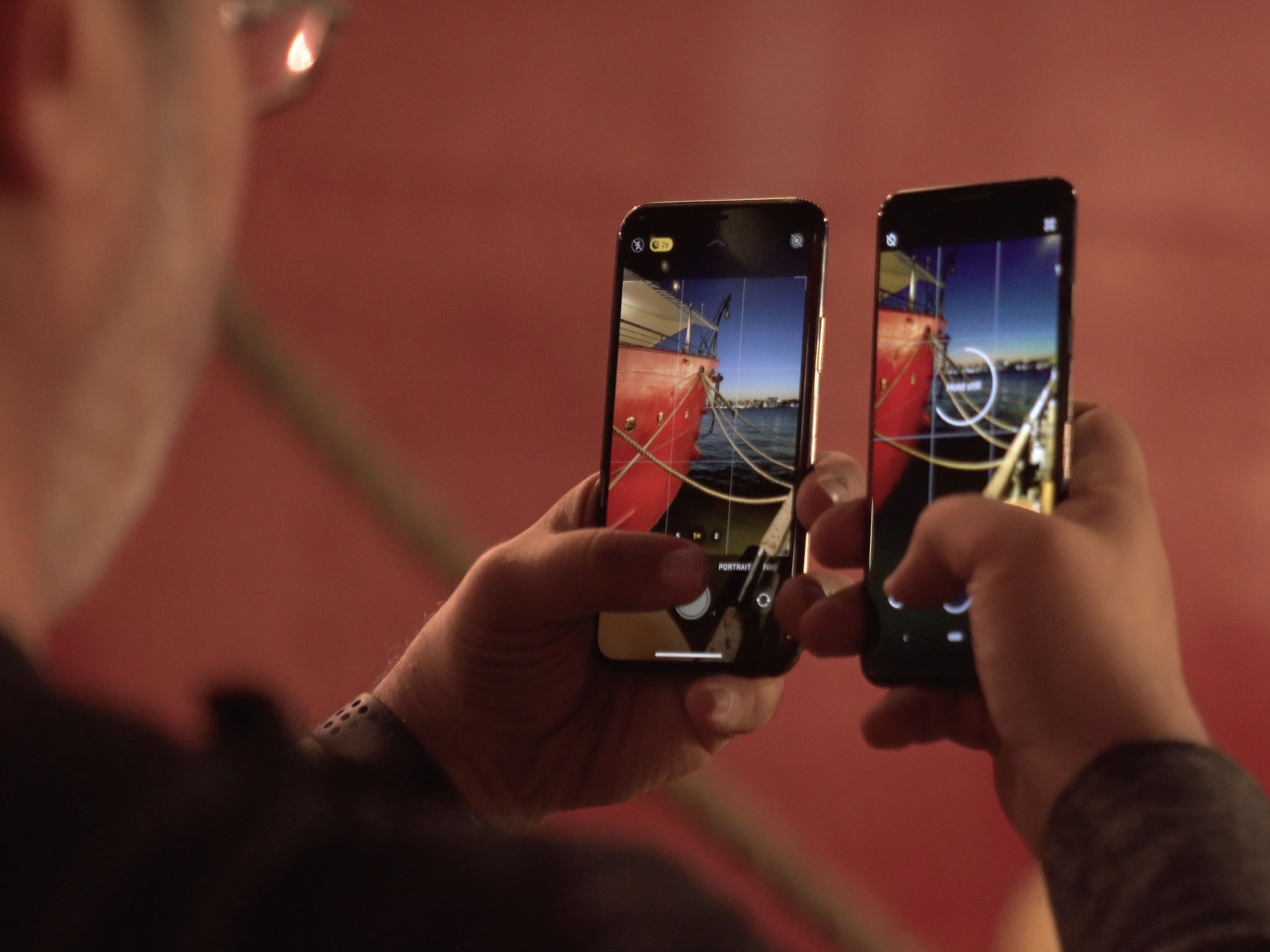Why people are — and aren't! — switching from Android to iPhone in 2019

But, we still see people switching all the time. Whether it's because a hot new phone comes out, a former roadblock disappears, compelling feature emerges, something that was holding you firm gets taken away, pricing changes, some privacy scandal explodes or whatever, people are still making the change and, I'm guessing, even more are still thinking about it.
Now, upfront, there are legit reasons not to switch from Android to iPhone.
1. Lack of Variety

First and foremost, only Apple makes iPhones or, more accurately, phones that run iOS.
With Android, you have a bunch of different hardware and approaches to choose from. You can get those monstrous 40mp cameras, periscopes, and 9-lens arrays, if that's what you really want.
You can get notches or hole punches or foreheads or even mechanical choochers what raise and lower or spin around.
You can have waterfall displays and USB-C ports and, on a few of them, even headphone jacks, SD card slots, fingerprint readers, and physical keyboards — yes, physical keyboards — still.
That sheer amount of variety at the hardware level is something Apple simply can't and won't match.
iMore offers spot-on advice and guidance from our team of experts, with decades of Apple device experience to lean on. Learn more with iMore!
They're all about the consistency.
2. Customization

Android also excels in customizability. With the iPhone, you're using pretty much the same system and interface as you've always used and as everyone else using it is also and has also always used.
With Android, you can change up the look of almost anything and everything. Get a third-party launcher, comic sans up the fonts, throw icons across the screen like DND dice on the table.
Whatever you want, whenever and however you want.
Apple has added dark mode and font apps, and maybe working on an updated launcher, but again, this isn't anything they'll ever want to or be able to match.
3. Pricing

You can sell or trade-in your old phone to help pay for a new iPhone. You can get installment or annual upgrade payments. And you can argue about whether an iPhone that costs more will last longer, ultimately being a better value, but what you can't argue with is up front pricing.
Because of Android's variety, you can find them at almost every price point, from like the $16 Jake Paralta special at the bodega, to really well-specced $400-600 mid-ranges that have most of the stuff modern flagships have, to those $1000 flagships with all the bells and whistles.
The Google Pixel 3a, OnePlus 7T, Moto G7, are all new phones that clock in at less than even Apple's couple year old but still sold new phones.
And if that's all the money you have in your pocket right now for a new phone, they're compelling phones for your pocket.
But, if you have other considerations or concerns, it's totally worth going through those as well.
1. The Google

It can be stressful, switching to a new phone. That's one of Android's big advantages. Even different devices from different manufacturers, like Samsung, LG, Google, OnePlus, whatever… they're not so different. Just log in with your Google account and, some current Huawei bans being the big exception, you're pretty much good to go.
With the iPhone, you log in with an Apple ID. You may already have one from iTunes or an iPad, or it may take you a minute to set one up, but then what?
While there are valid reasons to not switch from Android to iPhone, a few reasons points should be considered, including the ability to use Google services on iPhone and having more data privacy and security.
Well, if you want to stick with all your Google apps and services, then you just log in with your Google account all the same.
You can use Apple's Switch to iOS app, which makes the whole cross-grade process simple-as-in-automated, even hunting down your existing Play Store apps for you on the App Store, you can log into it at the system level for things like email, calendar, contacts, and notes, and you can just download and log into any Google app, like Gmail.
Once you do, that same login will be made available to you in any other app that uses Google login. Yes, like Pokemon Go.
Google puts almost every app and service they make on the iPhone because, frankly, they make so much of their money from people using those apps and services on the iPhone.
2. Not the Google

Now, you may have noticed something really interesting there. But, if you didn't, I'll spell it out for you.
Because you're not logging into Google at the device level, Google only gets your login — and your data — for the specific apps and services you choose.
If you want a full-on Google experience but with Apple hardware, because you think that's the best of both worlds, you can totally do that.
But, if the reason you're switching is that you believe Android to be more data capture and surveillance device than phone, you can run an iPhone with absolutely no Google login on your end. You can use Apple services instead, or Microsoft, or stick to Indies or a variety — whatever you want.
You can also pick and choose. Have Gmail and Calendar signed in but not YouTube or Maps. Aside from email someone else who uses Gmail or Gsuite, you have total control over your own stuff.
3. Privacy

A lot of companies are talking about privacy lately. That's not thanks to Apple. Sure, Apple has been championing it for a while, but Facebook, Google, Amazon, even Apple occasionally, have also screwed it up to the point that it's entered the public consciousness.
From Cambridge Analytica or people listening in to digital cameras and assistants, to selling our selfies to train drones, it's just been a bad couple of years for them… but a worse many years for us.
Facebook has begun talking about privacy, but they conflate it with encryption, and they can still get tons of our data either way.
Google, likewise, has been emphasizing privacy, but they conflate it with data retention, which basically means we get it back when they're done with it.
They're also both super happy to cut third-party developers out of the data chain and call that improved privacy. So far, though, only Apple seems to be super happy cutting even themselves out.
Take the new Apple Maps, for example. They have to know your location to give you directions and to crowdsource traffic data, but they segment out your route, throw away the start and end points so they don't know where you're coming from and where you're going, and then randomly capture only a few of the segments in between.
Even their screw up with Siri voice grading they're using as an opportunity to make the system more private.
If you're worried that means services are worse, you still have the choice of using Google's instead. Including Maps and Assistant. But if you're worried the services are too good, and not in a why that benefits you, you have the option of truly privacy-centric alternatives.
4. The camera

One of the few apps Google doesn't make available for anyone else, including even other Android phones, is the Camera app for the Google Pixel phone.
Yeah, even Google's generosity and openness, it seems, only goes so far.
And, the Pixel camera app is phenomenal. In an age where some companies are slapping 40-megapixel cameras, or 5 or more cameras, on the back of some phones, more often than not, Google can beat them with just mediocre hardware but simply the best algorithms in the business.
Apple doesn't do 40 megapixels binning and most people probably wouldn't consider their machine learning to be on the same level as Google's.
But, they take really, really, good 12-megapixel cameras and they use the world's best silicon to apply really, really good machine learning to them, and they end up coming up with something that even Pixel aficionados are currently calling the best cameras in the world.
That will go up and down over the course of the next year, I'm sure, but if the camera is your biggest deal-breaker, it's been dealt with.
When you factor in everything from how fast it launches to how well the customs storage controller ensures not a burst, not a frame is dropped, and the industry-leading 60fps extended dynamic range 4K video and stereo audio capabilities, any camera stress you may feel will likely evaporate just a few shutters or record clicks in.
5. The ecosystem

The Apple ecosystem is almost a cliche by now. But, it's that way for a reason.
You can go to a physical Apple Store and buy an iPhone and the staff there will help you set it up, including transferring your data from your old phone, even Android phone, to your new iPhone.
You can get everything from AirPods there to an Apple Watch, which is pretty much the best wearable in the business right now. You can also take free classes on photography, video, music, design, development, and more, to get as much out of your new devices as you possibly can.
You can use iMessage and FaceTime for end-to-end encrypted text and audio/video chat. They're not cross-platform, which is a bummer, but they work great. And, if you need cross-platform, you can get everything from Facebook Messenger to Facebook WhatsApp to Google Duo to Microsoft Skype, to Signal and Discord instead or as well.
You'll also get software updates, for every region, on every carrier, all the time, at the same time, for years. If you're the type of person who tries to be the 5% on the latest version of Android every year, you can just relax and be the 80 or 90% on the latest version
And, if you already have an iPad or a Mac, Continuity lets you share cellular data, copy and paste clipboards, and even the exact place you're in apps between devices, and AirDrop lets you send files back and forth so quickly and easily you literally start feeling lost with it.
Because Apple makes their stuff work so well together, you gain a little serenity and a lot of productivity.

Rene Ritchie is one of the most respected Apple analysts in the business, reaching a combined audience of over 40 million readers a month. His YouTube channel, Vector, has over 90 thousand subscribers and 14 million views and his podcasts, including Debug, have been downloaded over 20 million times. He also regularly co-hosts MacBreak Weekly for the TWiT network and co-hosted CES Live! and Talk Mobile. Based in Montreal, Rene is a former director of product marketing, web developer, and graphic designer. He's authored several books and appeared on numerous television and radio segments to discuss Apple and the technology industry. When not working, he likes to cook, grapple, and spend time with his friends and family.

